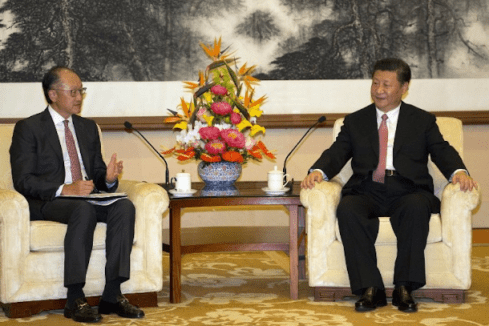China eyes new world order, sees Asia as test bed
China’s ruling Communist Party concluded its Central Conference on Work Relating to Foreign Affairs in June, only the second such event since Xi Jinping became president in 2012.
Aug 02, 2018

By Michael Sainsbury
China’s ruling Communist Party concluded its Central Conference on Work Relating to Foreign Affairs in June, only the second such event since Xi Jinping became president in 2012.
“These meetings are not everyday affairs,” said former Australian prime minister Kevin Rudd, who now serves as head of the Asia Society Policy Institute.
“They are the clearest expression of how the leadership sees China’s place in the world, but they tell the world much about China as well,” added the noted Sinologist, giving a typically clear-eyed analysis of the conference.
The key takeaway from the conference is that China has its own ideas about what a new international order should look like, and Asia Pacific is already feeling the effects of this.
While post-World War II institutions like the International Monetary Fund (IMF) and World Bank have lost some of their lustre and become something of a mess, the same cannot be said of many developing nations.
India, Indonesia, Brazil, South Africa, Nigeria, Saudi Arabia and Iran — the list of fast-evolving countries that are growing in wealth, population and influence, keeps getting longer.
More change is inevitable. China is determined to lead the charge and it is in a position to do just that given its growing clout in the region and the world.
Since the first iteration of last month’s conference, back in 2014, Xi has pushed the button on his Belt and Road Initiative, pumping money in the form of loans (not aid) into Southeast, South and Central Asia as well as the Pacific.
Now the project is moving further afield, into the Middle East and Eastern Europe. China has also initiated its first multilateral institution in the guise of the Asian Infrastructure Investment Bank (AIIB).
This is already making waves, with $4.2 billion invested in projects and funds last year alone. That marks a huge leg up from one year earlier, the Asia-centric bank’s first year of operation.
Meanwhile, in late June, the AIIB held an annual meeting in Mumbai and committed to investing $100 million in India’s National Investment and Infrastructure Fund. The bank also inked a memorandum of understanding with the Islamic Development Bank to co-finance certain projects.
Indian Prime Minister Narendra Modi said later that he wants the AIIB to expand its overall financing from $4 billion to $40 billion by 2020 — and climb further to $100 billion by 2025.
Yet the effect of this splurge has already seen China emasculate ASEAN, which now no longer speaks with one voice as it cannot agree on joint communiques if China is involved. --ucanews.com(used with permission)







Total Comments:0